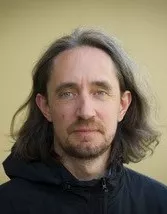Why did you want to publish on The Conversation?
“It started with me being invited to write a blog post for "Behind the Paper," which is a blog connected to the publisher where I had recently published a scientific article. I was a bit hesitant about whether it would be worth the effort, so I asked the faculty's research communicator, Tove Smeds for advice. She recommended The Conversation and said it would probably get more exposure if I wrote something there, since other news media republish material from there. And it really worked, instead of one post, there were about thirty posts on various media platforms globally”.
Photo: Tove Smeds.
How did you go about it?
“First, I looked at other articles to get an idea of the format and tone. I noticed that the articles I liked the most were written in first person and in a narrative style, so I tried to do the same. I wrote a first draft which was then bounced around a few times with an editor from The Conversation. All in all, I probably spent two days' work on this”.
How was it?
“It was fun and rewarding to write in a more personal style, but it was also difficult to maintain accuracy in the language without the scientific jargon, where the terms have their well-defined meaning”.
Why is the third task important?
“It depends very much on the context. It is obviously important if your research, for example, has relevance to healthcare or if it can be used in political discussions. In my case - research on psychedelics and the neurophysiological basis of consciousness - there is a great interest from the public in the subject matter itself, partly due to the enthusiasm around psychedelic therapy, but also because of concerns about the development of artificial intelligence. There are many wild theories about consciousness, and sometimes it is questioned whether consciousness can be studied with scientific methods at all. Then I think it's important to show that it’s indeed possible - and that you can discover unexpected new things when you try - instead of just shrugging your shoulders at the philosophical paradoxes”.
Do you have any tips?
“I spent a lot of time trying to convey not only the results but also the scientific process, that is, why we measured certain things and not others, and why it allowed us to draw certain conclusions but not others. I think that's important when writing popular science”.



